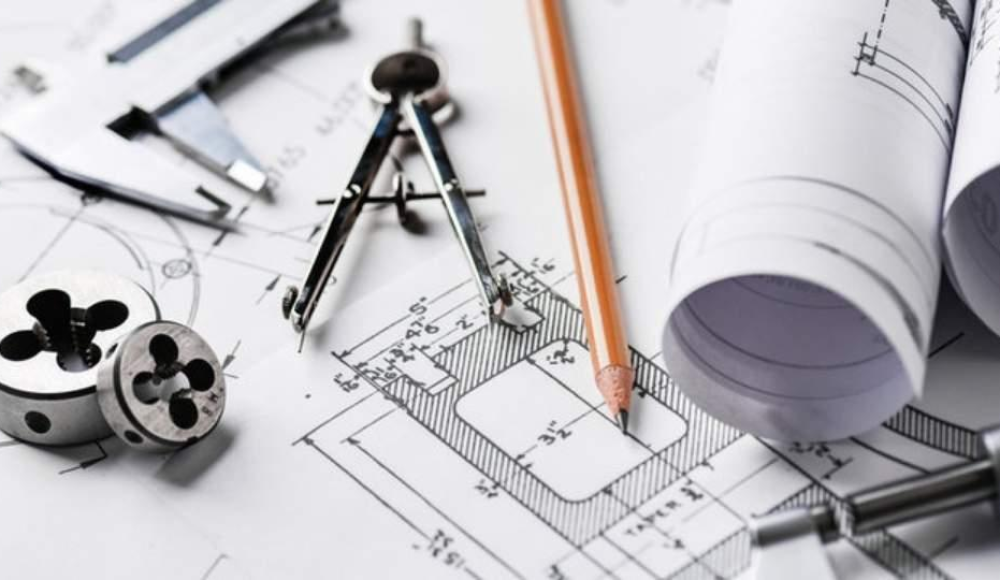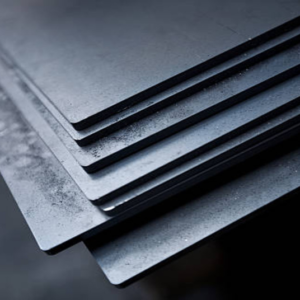Comunicando, e explicar ideias com uma imagem é rápido e eficaz. Em design industrial, o desenho técnico é significativo para designers que criam objetos reais. Os desenhos técnicos usam um conjunto de abreviações padrão para fornecer todas as informações necessárias para fabricar qualquer peça/produto. Este guia tem como objetivo melhorar seu conhecimento sobre como desenvolver desenhos de engenharia para transmitir com precisão a intenção do projeto aos fornecedores..
Por que usar desenhos de engenharia?
Um desenho de engenharia é a apresentação gráfica de uma estrutura de peça. Também ilustra dimensões e outros parâmetros necessários. Desenhos de peça única são convencionalmente usados para processamento na indústria de manufatura. Os desenhos de montagem descrevem como as peças que operam simultaneamente dentro de uma máquina/equipamento executam funções. Geralmente são empregados para verificar se as peças de produção estão em conformidade com as especificações de montagem..
Dois métodos principais são usados para criar desenhos de engenharia: manual e baseado em computador.
Desenhos Manuais
O desenho manual possui ferramentas como quadros, governantes, e pinças. Esses desenhos são inestimáveis para as universidades. E faculdades. Eles são usados para a imaginação espacial e formam os conceitos tão cruciais para uma abordagem criativa.
Desenhos Computadorizados
O desenho por computador é frequentemente realizado usando Computer Aided Design (cafajeste) ferramentas. Estes são mais populares na fabricação contemporânea. Os sistemas CNC podem importar diretamente arquivos virtuais/digitais(CAD/CAM) produzir automaticamente programas de usinagem e minimizar a quantidade de trabalho. Desenhos de computador também permitem alterações fáceis nos projetos. Eles mantêm diferentes versões do mesmo design. Eliminando necessidades de redesenho.
Embora modelos 3D possam ser fornecidos, desenhos de engenharia são necessários para transmitir características importantes. Por exemplo; tipo de material, tolerância, e outras características. 3Os modelos D devem ser usados em conjunto com desenhos de engenharia.
Como fazer desenhos de engenharia?
Antes, engenheiros e técnicos usaram instrumentos para produzir desenhos de engenharia. No entanto, hoje, estes são feitos no computador. Os engenheiros incorporam o CAD ao desenhar seus planos e aperfeiçoar modelos de trabalho detalhados. O software CAD permite a criação, bem como modificação, e análise de projeto em um ritmo incrivelmente rápido e com alta precisão.
Aqui está uma análise das etapas:
1. Planeje o projeto
Ao entrar em um programa CAD, Primeiramente, você precisa pensar bem. As equipes de projeto geralmente se reúnem com engenheiros ou técnicos de projeto que coletam todos os documentos necessários. Em primeiro lugar, é preciso conhecer seu projeto de A a Z; conhecer seus objetivos e funções de dentro para fora. Nesta fase de planejamento, é necessário determinar os requisitos do produto e suas funções primárias ao usar comandos no programa CAD. Para esta etapa, deve-se imaginar isso como a preparação para um projeto de sucesso.
2. Estabelecer arquivos de projeto
Após o planejamento, você deve começar iniciando um novo arquivo de projeto no programa CAD. O arquivo a seguir pode ser usado como base de design. Isso inclui recursos como o tamanho do design que você está criando, bem como as unidades de medida utilizadas – sejam fatores métricos ou imperiais, pertinente ao design.
3. Criação de Produto
É uma etapa onde todo o trabalho de design é feito. Os projetos são coordenados com desenhistas e outros profissionais de design. Os engenheiros estão autorizados a iniciar a construção do produto no sistema CAD. Quando o processo de design está em andamento, você deve monitorar os parâmetros do design, como dimensões, materiais, precisão, etc.. Porque quaisquer problemas que surjam serão resolvidos na fase inicial. Então, produtividade, e o consumo de tempo poderia ser reduzido em maior medida.
4. Insira informações técnicas
A aparência do produto também é representada em desenhos de engenharia. No entanto, não se limita apenas à estética. Depois que o layout geral for criado, os detalhes como dimensões, material, e quaisquer outras informações são incorporadas. Além disso, esta fase pode envolver alguns dados administrativos como as datas do projeto, revisões, e notas entre outros. Essas informações geralmente são escritas em caixas no lado do desenho para que possam ser facilmente lidas por outros engenheiros e por qualquer tomador de decisão..
5. Desenvolva Provas
Finalmente, quando todos os desenhos técnicos estiverem completos, é hora de fazer provas. Particularmente, é verdade porque as provas são versões preliminares do design. Alguns documentos importantes podem ser impressos, enquanto outros podem ser enviados por e-mail para a administração e outras partes interessadas para sua contribuição.
6. Colete comentários
Depois que as provas forem criadas, você coletará feedback dos engenheiros, membros da equipe, ou até mesmo clientes, com base no projeto. Em projetos grandes, pode haver vários indivíduos que precisam dar seu consentimento antes que o processo continue. Em alguns casos, o teste do produto antes de passar pela produção em larga escala também é realizado, para garantir a eficácia do design.
Aspectos Fundamentais dos Desenhos Técnicos/de Engenharia
- Bloco de título:O bloco de título está localizado no canto inferior direito de um desenho. Tem o nome da peça, nomes de pessoas, nome da empresa, e o número do desenho. Para maior clareza, detalhes como unidade, ângulo de projeção, material, e escala também são fornecidos.
- Coordenadas:Eles são úteis ao trabalhar com desenhos grandes que podem ser complicados. Coordenadas são usadas como padrões, localizado ao longo das bordas do desenho para facilitar a apresentação de certos aspectos.
Tipos de linhas em desenhos de engenharia
Linhas Limites
A linha contínua é usada para indicar a forma física de um objeto, bordas externas e internas. Eles ficam mais grossos onde o contorno das bordas é necessário e mais finos para detalhes internos.
Linhas ocultas
As linhas ocultas representam todas as partes do objeto que não são visíveis do ponto de vista do desenho. Por exemplo, algumas linhas utilizadas na peça torneada podem representar um degrau interior em uma delas.
Linhas Centrais
As linhas centrais marcam a posição dos furos e peças centrais semelhantes. Eles auxiliam na redução de dimensões em um desenho para reduzir confusão e aumentar a compreensão da imagem.
Linhas de dimensão
Linhas de dimensão são linhas que denotam medidas. Essas linhas têm pontas de seta apontando para linhas de extensão, que indicam o tamanho ou dimensão entre dois pontos. Por exemplo, uma peça longa com a mesma geometria pode ser desenhada com uma pausa para economizar espaço.
Cortando linhas planas:
As linhas do plano de corte representam o plano de corte através de um componente. O plano pretendido exibe os recursos internos da peça. Por exemplo, uma linha de corte pode ser chamada de A-A e pode mostrar detalhes internos, como furos.
Tipos de desenho de engenharia
Na área de engenharia, agrupamos desenhos em quatro tipos principais: Civil e Estrutural, Mecânico, Elétrica & Eletrônicos, e Geométrico. Essas categorias nos ajudam a organizar o processo de design. Todos eles têm seu uso particular para transmitir dados técnicos específicos. O conhecimento dessas categorias nos ajuda a sermos precisos em nossa comunicação durante a implementação do projeto. Agora vamos dar uma olhada em cada tipo com mais detalhes.
Desenho Geométrico
Em desenho geométrico, ilustramos formas como retângulos, cones, e esferas. Estes nós categorizamos com base nas dimensões como desenhos geométricos planos e desenhos geométricos sólidos. Desenhos planos representam objetos tendo apenas comprimento e largura, por exemplo, quadrados, triângulos, etc.. Quando adicionamos profundidade, obtemos figuras geométricas tridimensionais, como um cubo ou cilindro.
Desenhos de Engenharia Mecânica
Quando temos desenhos mecânicos, retratamos máquinas e suas peças. Eles nos ajudam a transmitir as ideias complicadas envolvidas em projetos mecânicos, normalmente muito útil para engenheiros. Podemos dissecar cada peça e montagem através de diagramas de peças e montagens. Essa clareza serve para que todos saibam como construir ou consertar o maquinário.
Desenho de Engenharia Civil
Os desenhos civis são importantes quando projetamos itens como edifícios ou pontes. Esses desenhos nos ajudam a apresentar conceitos que as equipes de construção podem entender bem. Começando das estradas às barragens, usamos esses recursos visuais como referência para o desenvolvimento de tais estruturas. Os desenhos de engenharia civil empregados em nossos projetos garantem que a construção de cada projeto seja feita com segurança e eficácia.
Desenhos Elétricos e Eletrônicos
Em desenhos elétricos e eletrônicos, a ênfase está no poder, o circuito, e os dispositivos. Esses desenhos ajudam a planejar e executar projetos elétricos da melhor forma possível. Eles permitem a representação de tudo, desde motores até sistemas eletrônicos sofisticados. Esses desenhos são usados de forma eficaz na instalação de componentes elétricos em painéis. Os gráficos ajudam a tornar o trabalho simples e sistemático.
Técnicas de seccionamento em desenhos de engenharia
O seccionamento é usado para mostrar como um objeto é organizado internamente ou dividido internamente.. Este método faz com que um objeto pareça ter sido cortado bem ao meio. A separação é usada em muitos projetos industriais. A divisão cria dois blocos, rotulados como A e B. Um objeto em um desenho pode ser separado de várias maneiras, assim como separar uma maçã em fatias. Existem tantas técnicas de seccionamento quando se trata de desenhos, como será explicado abaixo.
Seccionamento Completo
Na seção completa, o plano de corte corta completamente um objeto. Esta seção é onde o objeto é mostrado em duas partes. Desta forma, o seccionamento pode ser usado a qualquer momento para realizar um exame detalhado do objeto.
Vista semi-secional
É possível projetar no plano de projeção perpendicular quando temos um plano simétrico. Metade é representada na forma seccionada e a outra metade na forma de linha tracejada. A vista semi-secional mostra membros equilibrados e expõe layouts internos e externos. A linha divisória é representada por apenas uma linha pontilhada. Desta forma não existem linhas ocultas o que torna clara a representação da estrutura interna.
Seções divididas
Vistas de seção quebrada cortam material até uma determinada profundidade. Esta técnica ajudará a revelar a estrutura interna do modelo da melhor maneira. A parte quebrada é normalmente definida por um perfil fechado, geralmente um spline. O usuário pode inserir uma profundidade exata ou usar outra visualização para definir um local com precisão.
Vistas transversais
As áreas de suas camadas transversais são iguais à área total do objeto. Por exemplo, a altura de um cilindro e o raio de um cilindro são rotulados em projeções ortográficas. Quando este cilindro é visto ortogonalmente, as propriedades geométricas do cilindro são visíveis.
Visualização de ampliação parcial
Os desenhos técnicos podem usar vistas parciais para fornecer mais informações. Essas visualizações facilitam o fornecimento de mais detalhes sobre uma peça. O uso de vistas parciais melhora a compreensão do conceito durante a análise da peça.
4 Erros comuns em desenhos de engenharia
1. Incompleto, Bagunçado, ou Dimensões Repetidas
- Dimensões importantes das peças devem ser marcadas diretamente no desenho.
- Não use dimensões fechadas porque podem confundir os usuários.
- Em todo o caso, certifique-se de que as dimensões estejam marcadas simbolicamente de uma forma que seja conveniente para análises e cálculos posteriores.
2. Ver erros
- Incompatibilidades e visões mal orientadas ou visões que não se alinham em geral podem dificultar a compreensão do projeto.
- Certifique-se de que todas as visualizações sejam tão comunicativas quanto o que o design deve significar.
3. Falta de tolerância dimensional
- Especificamente, quando os requisitos de precisão dimensional são altos, é necessário indicar as tolerâncias dimensionais.
- Se isso não for feito, haverá extensas imprecisões de usinagem e desperdício de peças de trabalho.
4. Requisitos técnicos fora do padrão
- Os requisitos técnicos para as peças, como tolerâncias de dimensões, tolerâncias de forma, e rugosidade superficial devem sempre ser padronizadas e marcadas.
Conclusão
Para os designers, engenheiros, e maquinistas, desenhos de engenharia são meios essenciais de comunicação. Eles educam e compartilham ideias e conceitos, além de descrever características de uma peça. Muitas informações são incorporadas nesses desenhos e servem para explicar a intenção do projeto. É possível encontrar detalhes importantes e definir estratégias adequadas de usinagem para fornecedores.
Principais habilidades da Precision no trabalho
Nosso foco é oferecer soluções de precisão na Tops Precision. Nossos engenheiros e maquinistas trabalham lado a lado com analistas de CAD. Juntos, eles passam por todos os aspectos dos desenhos de engenharia conforme declarado acima. Design instantâneo para capacidade de fabricação (DFM) está disponível para garantir os melhores resultados. Também garante que todas as peças usinadas que saem do processo sejam de qualidade premium.
Comece hoje
Envie seus arquivos CAD e obtenha uma estimativa de preço gratuitamente. Dê uma olhada nos benefícios de terceirizar suas necessidades de usinagem para a Tops Precision. Obtenha as vantagens de aconselhamento qualificado e trabalho preciso para projetos de fabricação!
OK,这是一篇关于工程图基础知识的全面文章。针对这篇文章,以下是 5 chegar 8 个相关的常见问题解答 (Perguntas frequentes)。
Perguntas frequentes
1. What are the two main projection methods used in engineering drawings, and why is one specified in the title block?
The two main projection methods are:
-
-
First Angle Projection: The object is imagined to be in the first quadrant. The view is projected onto the plane behind the object. Used primarily in Europe and Asia.
-
-
-
Third Angle Projection: The object is imagined to be in the third quadrant. The view is projected onto the plane in front of the object. Used primarily in the US and Canada.
-
2. Why is “Tolerancing” (Dimensional Tolerance) so critical, and what happens if it’s missing?
Dimensional Tolerance defines the permissible limit of variation for a dimension (por exemplo., 10.00 ± 0.05 milímetros). It is critical because:
-
Cost Control: Tighter (menor) tolerances cost significantly more to achieve. Indicating a tolerance prevents the machinist from over-machining the part to an unnecessary, high-cost precision.
- Fit and Function: It ensures the part will assemble correctly with mating parts (ou seja, it avoids interference or excessive gaps).If tolerance is missing, the machinist will typically apply the default tolerance defined in the title block or shop standard, which might not be tight enough for critical features or, por outro lado, might be too tight and unnecessarily increase manufacturing costs.
3. In the context of lines, what is the key functional difference between a “Hidden Line” and a “Cutting Plane Line”?
-
Hidden Line: (Dashed pattern, afinar) Used to show the geometry that already exists but is obscured by a visible feature (por exemplo., the bore of a hole hidden behind a solid face).
-
Cutting Plane Line: (Espesso, dashed with ends emphasized by arrows/letters) Used to indicate a hypothetical plane where the object is conceptually cut to reveal its internal structure in a section view (por exemplo., A-A). The line itself doesn’t represent material; it defines the view.
4. What is the difference between a “Part Drawing” and an “Assembly Drawing”?
| Recurso | Part Drawing (Detail Drawing) | Assembly Drawing |
| Propósito | To provide all information needed to manufacture a single component. | To show how multiple manufactured parts fit together to form a machine or product. |
| Key Info | Complete dimensions, tolerâncias, acabamento superficial, material, part number. | Item numbers/Balloons, Lei de Materiais (Bom), exploded views, assembly instructions. |
| Tolerance Focus | Manufacturing tolerances. | Fit and function tolerances between mating components. |
5. Why is a “Partial Enlargement View” often necessary on a drawing?
A Partial Enlargement View (often called a Detail View) is necessary when a specific small, complexo, or critical feature (like a small radius, a complex thread, or an area with very tight tolerances) is too small to be clearly dimensioned or adequately seen in the main view. The detail view is taken from the main view, usually encircled and marked (por exemplo., DETAIL B), and then drawn at a larger scale (por exemplo., 5:1) to provide the necessary clarity for manufacturing and inspection.
6. Why do engineers need engineering drawings even when they have a highly detailed 3D CAD model?
3D CAD models effectively communicate shape, but they inherently lack crucial non-geometric information that is essential for manufacturing:
-
Tolerâncias: The model only shows the nominal size, not the acceptable deviation (±).
-
Acabamento de superfície: The required roughness (por exemplo., Rá 3.2) cannot be stored on the model’s geometry.
-
Material: The model doesn’t specify the material grade (por exemplo., 6061-Alumínio T6).
-
Notes/Revisions: Critical process notes, welding instructions, and revision history are managed on the 2D drawing.
7. What does “Closed Dimensions” mean, and why should they be avoided?
Closed dimensions (or redundant dimensions) occur when a dimension is given that can be calculated from other dimensions already provided. Por exemplo, if you dimension the total length and the lengths of two internal segments, the third internal segment’s length is redundant.
They should be avoided because if the design is later revised and only two of the three related dimensions are updated, the drawing becomes over-dimensioned and conflicting. This forces the machinist to guess which dimension is correct, potentially leading to errors.



